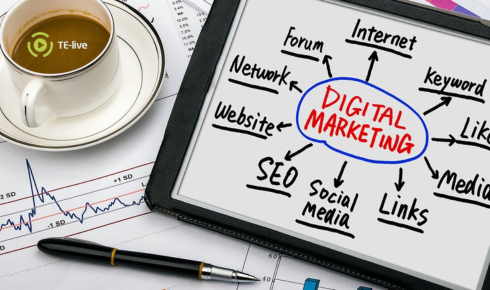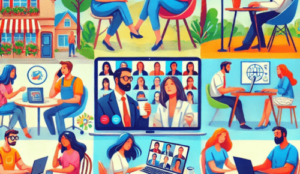Why Personalisation Matters in Modern Marketing
Ever walked into a café and the barista starts making your usual flat white before you even reach the counter? That little touch of personalisation feels magical, right? Now, imagine your customers feeling that same magic every time they interact with your business, online, offline, via email, or social media.
In today’s fast-paced digital landscape, personalisation isn’t just a nice-to-have; it’s the secret sauce that separates thriving businesses from those that stagnate. And tools like the HubSpot marketing platform and HubSpot marketing automation are the baristas behind the curtain, ensuring every interaction feels tailored and relevant.
Why Personalisation Is No Longer Optional
Let’s face it, cookie-cutter marketing is out. Consumers, Kiwi or otherwise, are tired of generic emails, random discounts, and one-size-fits-all campaigns. Personalisation is now the expectation, not a bonus.
Here’s why it matters:
- Stronger Connections: Customers respond better when messaging resonates with their preferences and behaviours.
- Increased Conversions: Relevant offers mean higher likelihood of purchase.
- Customer Loyalty: When people feel understood, they stick around longer.
- Data-Driven Decisions: Personalisation relies on real data, which can inform smarter marketing strategies.
Think of it this way: sending the same email to everyone is like throwing a party where you play just one song on repeat. A bit dull, right? Personalisation ensures the playlist matches the crowd’s vibe.
How the HubSpot Marketing Platform Makes Personalisation Easy
A HubSpot marketing platform is like your personal marketing concierge. It centralises data, campaigns, and customer interactions so you can orchestrate a seamless experience across channels.
Features That Make Life Simpler
- Smart Email Campaigns: Send emails that adapt based on user behaviour. Opened last email? Here’s a follow-up. Clicked a link? Here’s a related offer.
- Contact Segmentation: Group customers by behaviour, location, or preference.
- Content Personalisation: Show website visitors content relevant to their interests or past interactions.
- Reporting & Analytics: Understand what works and refine strategies accordingly.
HubSpot Marketing Automation: Personalisation on Autopilot
HubSpot marketing automation takes the grunt work off your plate. Think of it as a well-trained sous-chef, anticipating what your customers need before they even ask.
Key Advantages:
- Lead Nurturing: Automatically guide prospects down the sales funnel with personalised content.
- Triggered Emails: Send emails based on specific actions, like downloading a brochure or visiting a pricing page.
- Workflow Automation: Streamline repetitive tasks, freeing up your team for creative work.
- Behaviour Tracking: Understand which content your audience engages with most, and tailor future interactions.
FAQs About Personalisation in Marketing1. How does personalisation impact ROI?
Personalisation increases engagement, which directly affects sales. Businesses using HubSpot marketing automation report up to 20–30% higher conversion rates compared to generic campaigns.
2. Is personalisation only for large businesses?
Not at all. Even small businesses can benefit. In fact, Kiwis love businesses that “know them.” A personal touch can help smaller retailers and service providers compete with larger brands.
3. What types of personalisation should I consider?
- Demographics: Age, location, and gender.
- Behavioural: Past purchases, website activity, email engagement.
- Psychographics: Interests, lifestyle, and preferences.
4. Can personalisation feel intrusive?
Only if done poorly. Always be transparent, respect privacy, and use data responsibly. When done right, it’s like a friendly nod from a local store owner, it feels thoughtful, not creepy.
Common Mistakes Businesses Make
Even with tools like HubSpot, some businesses stumble. Avoid these traps:
- Overcomplicating Workflows: Too many branches or conditions can confuse both the system and your team. Keep it simple.
- Neglecting Data Quality: Automation only works if your data is accurate. Deduplicate, clean, and update regularly.
- Ignoring Customer Preferences: Segmenting customers without understanding what they care about is like guessing someone’s coffee order—it rarely works.
- Failing to Test: Always A/B test campaigns. Even small tweaks can significantly improve engagement.
Tip: Start small, monitor results, and gradually scale your personalised campaigns using HubSpot marketing automation.
Tips for Effective Personalisation in New Zealand
- Know Your Audience: Use data wisely to understand Kiwi preferences and behaviour.
- Localise Content: Include local references, slang, or seasonal offers to resonate with your audience.
- Balance Automation with Human Touch: Automation handles the repetitive tasks, but personal communication still matters.
- Measure and Refine: Track engagement, adjust workflows, and experiment with different messaging.
The Future of Personalisation
Marketing is evolving. AI, predictive analytics, and machine learning are enabling even more sophisticated personalisation. But the essence remains the same: knowing your customer and delivering value that feels relevant.
With tools like the HubSpot marketing platform and HubSpot marketing automation, businesses in New Zealand can compete with global brands without losing the local charm and personal touch.
Imagine opening your inbox and every email feels like it was crafted just for you. That’s the power of personalisation, and your business can give that feeling to every customer.




